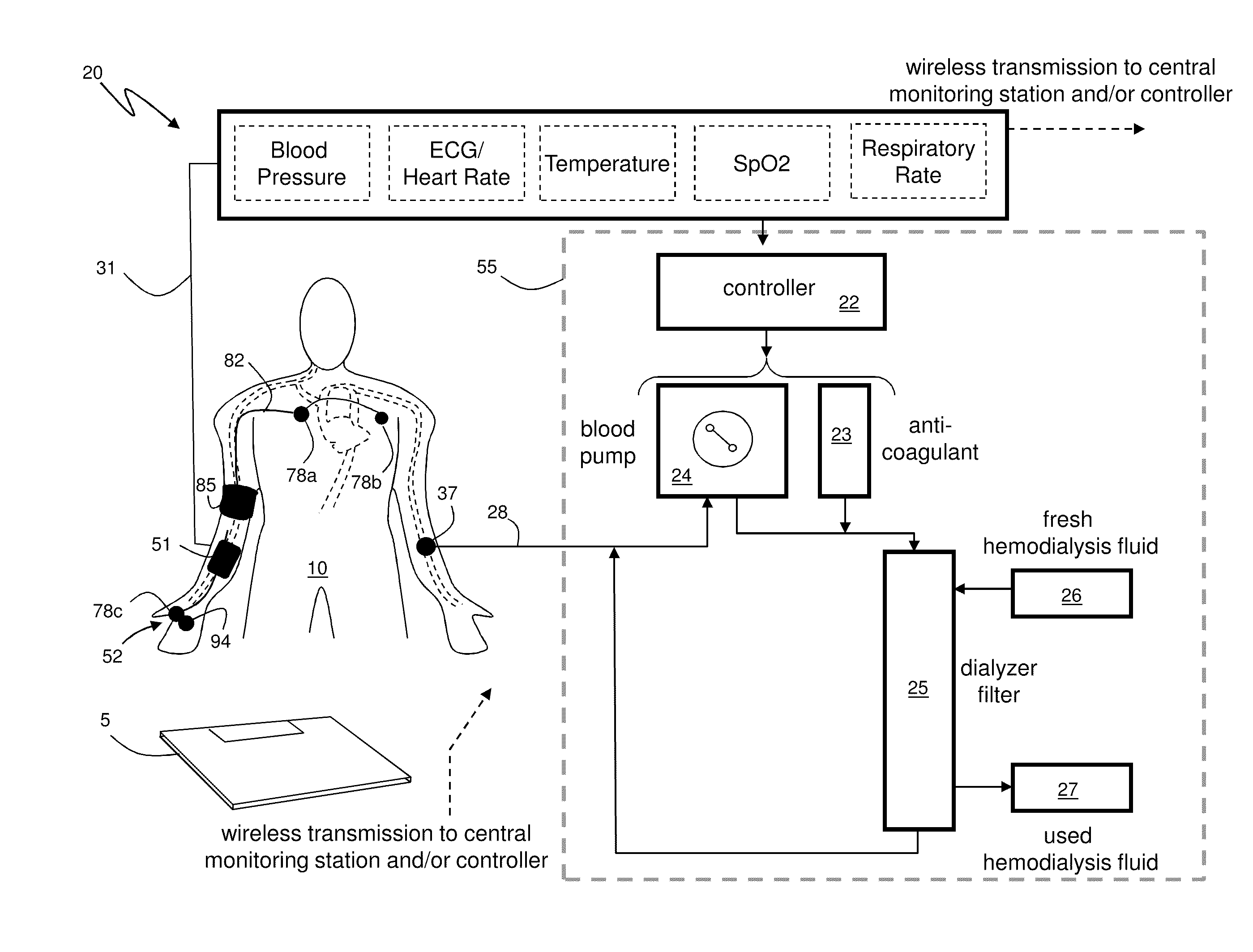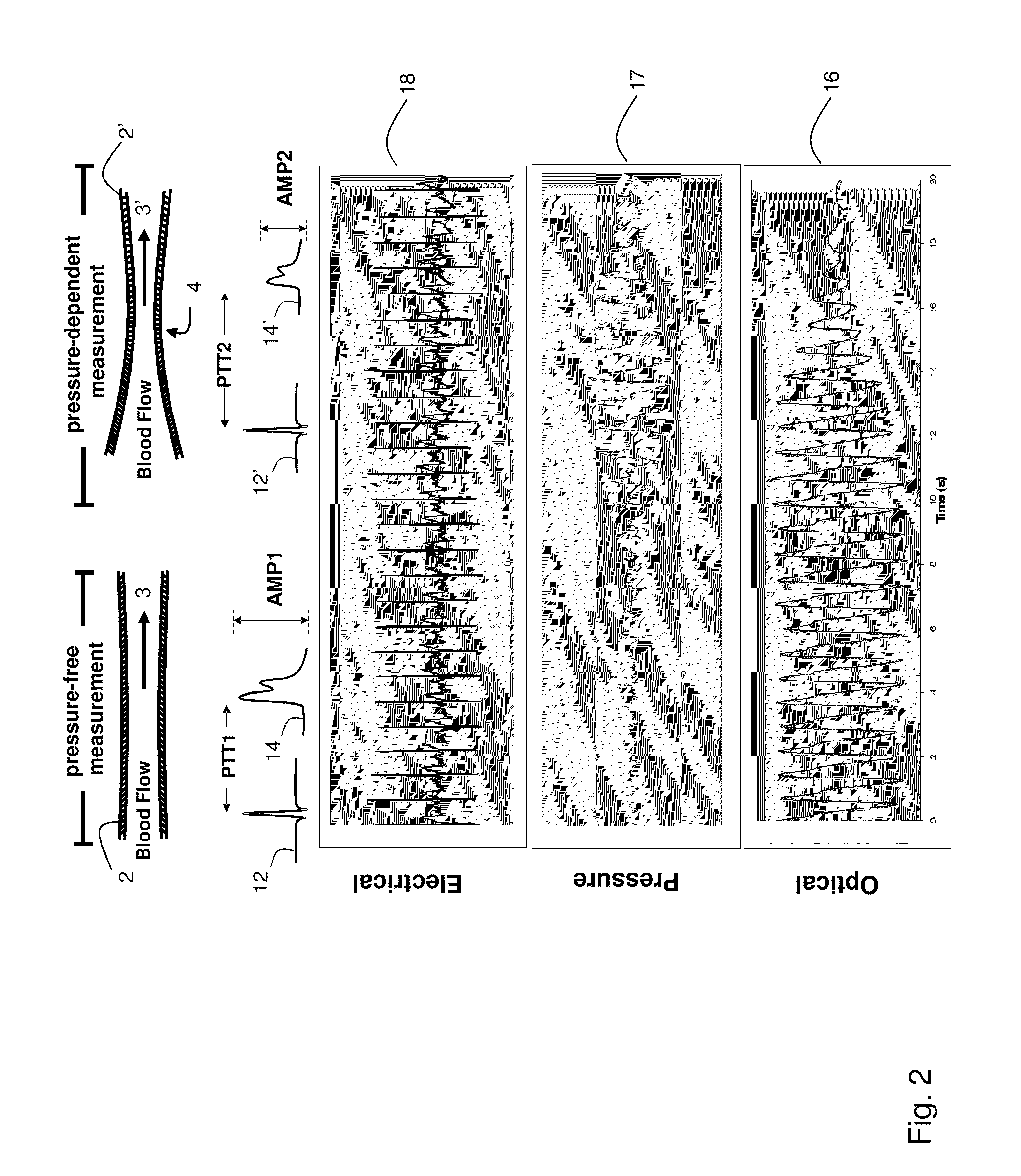System for measuring vital signs during hemodialysis
- Summary
- Abstract
- Description
- Claims
- Application Information
AI Technical Summary
Benefits of technology
Problems solved by technology
Method used
Image
Examples
Embodiment Construction
[0041]FIG. 1 shows a schematic drawing of a system 20 for continuously monitoring vital signs, and particularly blood pressure, from a patient 10 attached to a hemodialysis machine 55. The system 20 features a body-worn monitor 51 that uses the Composite Method to measure SYS, DIA and other vital signs (e.g. heart rate, temperature, SpO2, and respiratory rate) and time-dependent waveforms (e.g. ECG, PPG). The body-worn monitor 51 connects to a cuff-based monitor 85 featuring an embedded, inflatable bladder that connects to a cuff-based pneumatic system (described below). During an indexing measurement the cuff-based monitor 85 attaches proximal to the patient's brachial artery. The body-worn monitor 51 additionally connects to a finger-worn sensor 94 featuring a cable terminated with an end portion 52 that typically wraps around the base of the patient's thumb. The end portion 52 includes one or more electrodes 78c and an optical sensor, typically with multiple light-emitting diodes...
PUM
| Property | Measurement | Unit |
|---|---|---|
| Pressure | aaaaa | aaaaa |
| Flexibility | aaaaa | aaaaa |
| Heart rate | aaaaa | aaaaa |
Abstract
Description
Claims
Application Information
 Login to View More
Login to View More - R&D
- Intellectual Property
- Life Sciences
- Materials
- Tech Scout
- Unparalleled Data Quality
- Higher Quality Content
- 60% Fewer Hallucinations
Browse by: Latest US Patents, China's latest patents, Technical Efficacy Thesaurus, Application Domain, Technology Topic, Popular Technical Reports.
© 2025 PatSnap. All rights reserved.Legal|Privacy policy|Modern Slavery Act Transparency Statement|Sitemap|About US| Contact US: help@patsnap.com



